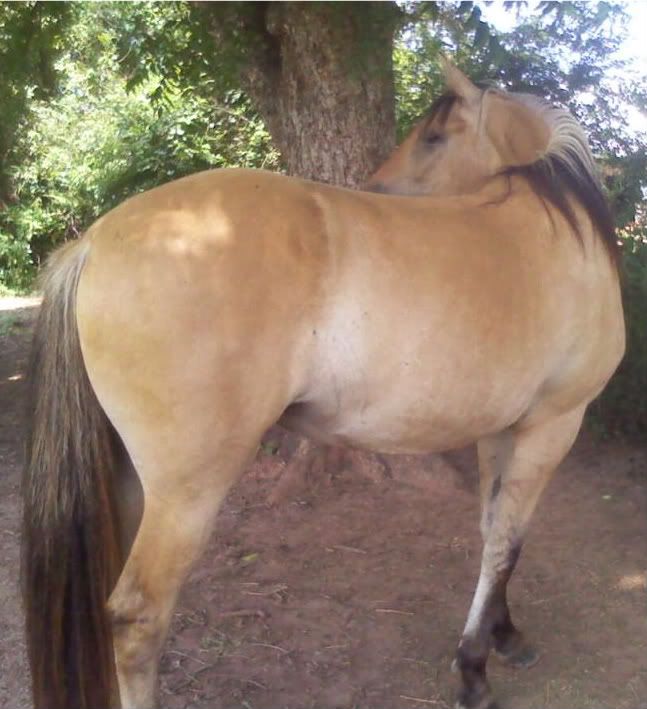Post by DianneC on Jul 1, 2008 9:54:10 GMT -5
If you are near Georgia and your horses aren't current on their vaccinations for EEE here is something motivating.
Cases of EEE Confirmed in Georgia
The Georgia Division of Public Health has confirmed six positive cases of Eastern Equine Encephalitis (EEE) in horses within five South Georgia counties.
Spokeswoman for the south health district says nine cases of the vector borne virus have been confirmed in horses in Georgia this year, up from a total of six cases in the state for all of last year.
The most recent cases were two horses in Lowndes County, with one case each in Berrien, Brooks, Cook and Lanier counties. Earlier cases were in Brantley, Long and Wayne counties. Lowndes County Manager says the Public Works Department began increasing mosquito spraying in the areas of the outbreak as soon as the county was notified.
Definition:
Eastern Equine Encephalomyelitis (EEE): viral infection of the horse's brain and spinal cord, which can infect horses, humans and selected birds, transmitted by mosquitoes. Signs can include behavioral changes, loss of appetite and fever. These can progress in 12 to 24 hours to dementia with head pressing, teeth grinding, circling and often blindness. The disease is fatal in up to 90 percent of cases. Surviving horses often have residual mental dullness. Treatment is generally supportive.
Transmission of EEE/WEE/VEE is by mosquitoes, and infrequently by other bloodsucking insects, to horses from wild birds or rodents, which serve as natural reservoirs for these viruses. Human beings are also susceptible to these diseases when infected mosquitoes transmit the virus to them; however, horse-to-horse or horse-to-human transmission by mosquitoes is highly unlikely, because the amount of virus in the blood of horses affected by EEE or WEE is small. The viremia that occurs with VEE is higher and direct horse-to-horse or horse-to-human transmission is possible. Of these three encephalidites, WEE has the lowest mortality (approx. 50 percent). Eastern equine encephalomyelitis is the most virulent for horses, with mortality approaching 90 percent. Epidemiology evidence indicates that young horses are particularly susceptible to disease caused by EEE.
Cases of EEE Confirmed in Georgia
The Georgia Division of Public Health has confirmed six positive cases of Eastern Equine Encephalitis (EEE) in horses within five South Georgia counties.
Spokeswoman for the south health district says nine cases of the vector borne virus have been confirmed in horses in Georgia this year, up from a total of six cases in the state for all of last year.
The most recent cases were two horses in Lowndes County, with one case each in Berrien, Brooks, Cook and Lanier counties. Earlier cases were in Brantley, Long and Wayne counties. Lowndes County Manager says the Public Works Department began increasing mosquito spraying in the areas of the outbreak as soon as the county was notified.
Definition:
Eastern Equine Encephalomyelitis (EEE): viral infection of the horse's brain and spinal cord, which can infect horses, humans and selected birds, transmitted by mosquitoes. Signs can include behavioral changes, loss of appetite and fever. These can progress in 12 to 24 hours to dementia with head pressing, teeth grinding, circling and often blindness. The disease is fatal in up to 90 percent of cases. Surviving horses often have residual mental dullness. Treatment is generally supportive.
Transmission of EEE/WEE/VEE is by mosquitoes, and infrequently by other bloodsucking insects, to horses from wild birds or rodents, which serve as natural reservoirs for these viruses. Human beings are also susceptible to these diseases when infected mosquitoes transmit the virus to them; however, horse-to-horse or horse-to-human transmission by mosquitoes is highly unlikely, because the amount of virus in the blood of horses affected by EEE or WEE is small. The viremia that occurs with VEE is higher and direct horse-to-horse or horse-to-human transmission is possible. Of these three encephalidites, WEE has the lowest mortality (approx. 50 percent). Eastern equine encephalomyelitis is the most virulent for horses, with mortality approaching 90 percent. Epidemiology evidence indicates that young horses are particularly susceptible to disease caused by EEE.


